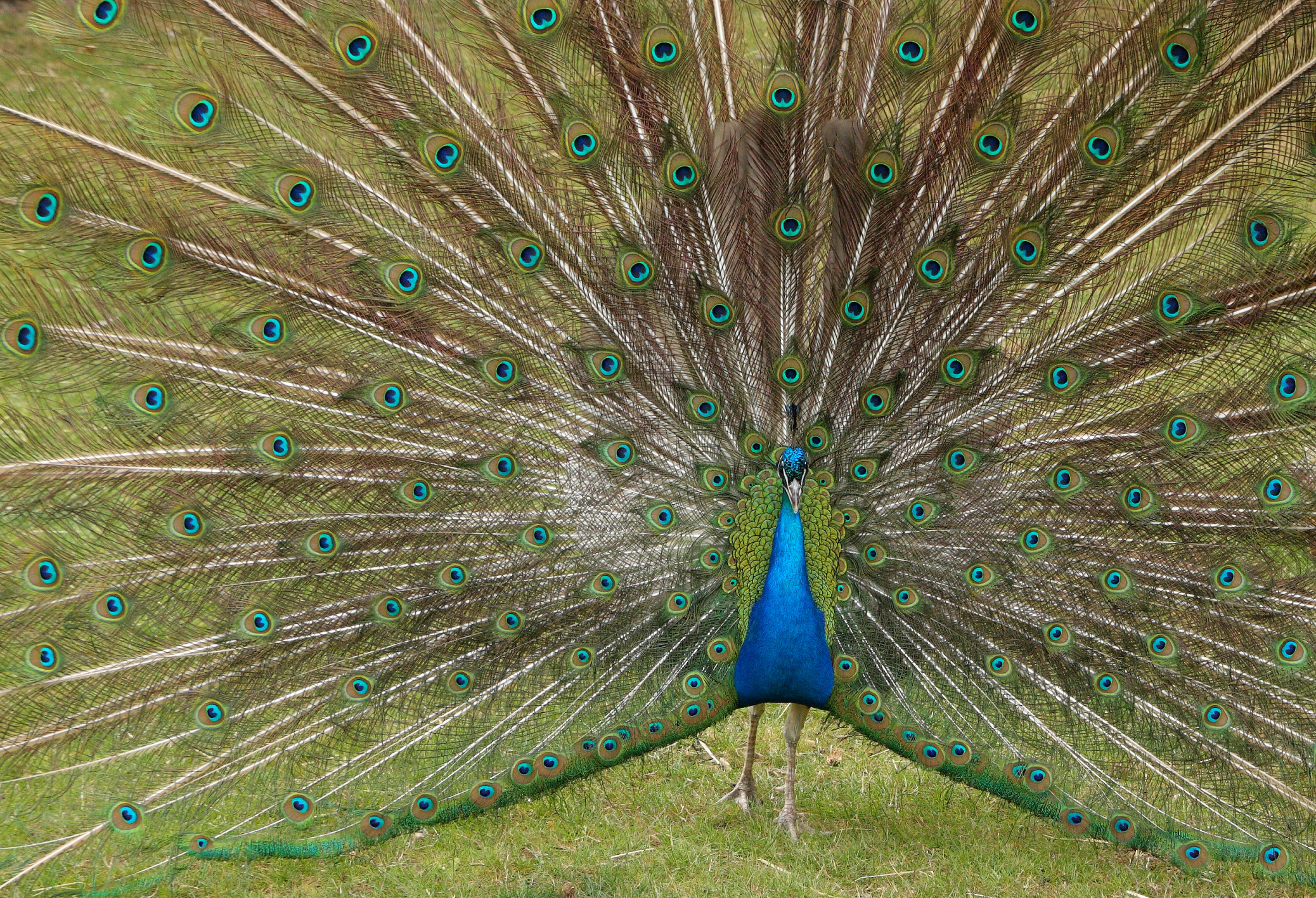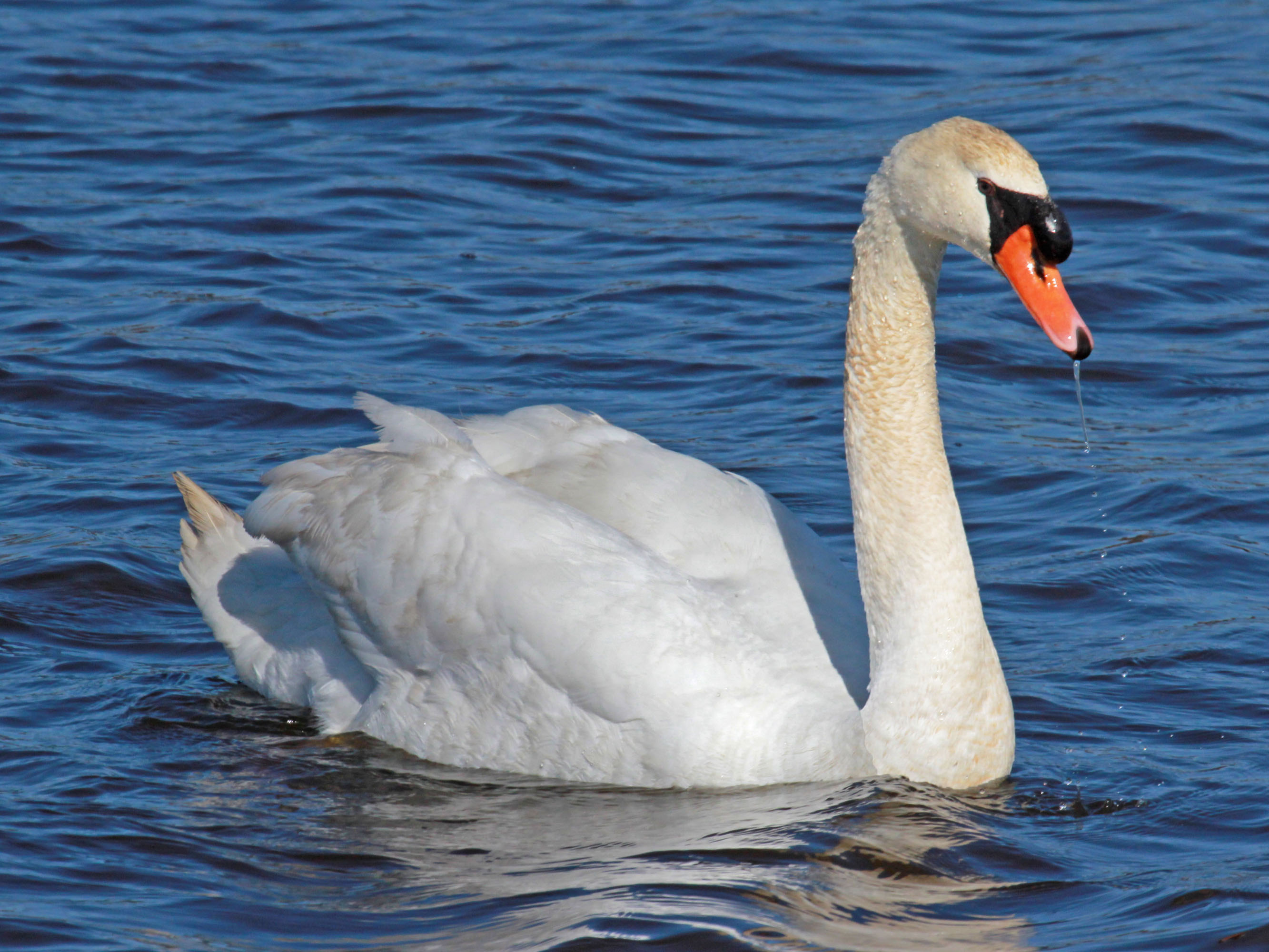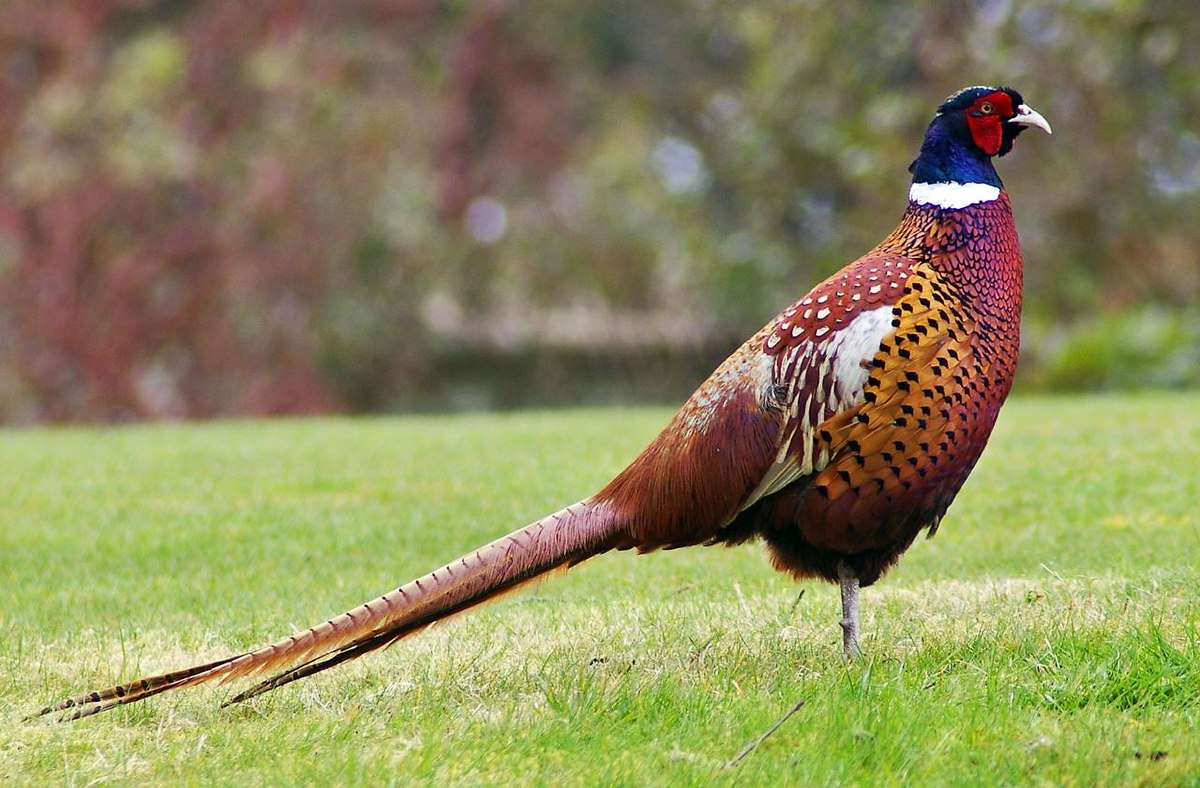Fowl birds are a group of birds that belong to two biological orders, namely the gamefowl or landfowl (Galliformes) and the waterfowl (Anseriformes). These birds are typically farmed for their meat, eggs, or feathers.
Chickens, ducks, geese, turkeys, swans, guineafowls, quails, partridges, pheasants, peafowl, ostriches, and emus are some of the types of fowl birds. Chickens and turkeys are members of the order Galliformes, while ducks and geese are members of the order Anseriformes.
You are reading: 12 Types Of Fowl Birds
In this article, we will explore 12 types of fowl birds in more detail.

12 Types Of Fowl Birds
Chickens
Chickens are one of the most common types of fowl birds and account for over 94% of the world’s poultry population. They are domesticated birds that are used for their meat, eggs, and feathers.
Chickens are an excellent source of lean meat and are great egg producers. They are also used for fertilizer, lawn maintenance, and pest control, as they readily eat weeds and pest species like ticks and caterpillars.
Chickens are members of the order Galliformes, which also includes turkeys, quails, and pheasants. Interestingly, the term “chicken” originally referred only to an immature or young bird, and in older sources, and still often in trade and scientific contexts, chickens as a species are typically referred to as common fowl or domestic fowl.
There are many breeds of chickens, such as the Black, Golden Neck, Mille Fleur, Mottled, Porcelain, Self Blue, and White. Chickens are also used for their feathers, which provide fluffy material for blankets, pillows, jackets, and gloves.
Ducks
Ducks are a type of waterfowl bird that belong to the family Anatidae. They are generally smaller and shorter-necked than swans and geese, which are also members of the same family.
Ducks are mostly aquatic birds and can be found in both fresh and saltwater. They are sometimes confused with other types of water birds with similar forms, such as loons or divers, grebes, gallinules, and coots.
Ducks are known for their distinctive bills, which are broad and flat and equipped with rows of fine plates that filter water and mud. There are many species of ducks, and they can be grouped into categories such as dabbling ducks, diving ducks, and sea ducks.
Ducks are commonly farmed for their meat, eggs, and feathers. They are also hunted for sport and are a popular subject for birdwatchers and nature enthusiasts.
Geese

Geese are a type of waterfowl bird that belong to the family Anatidae. They are intermediate in size and build between large ducks and swans.
Geese are associated mainly with fresh water and are found in the Northern Hemisphere. They are known for their distinctive honking calls and are often seen flying in V-formations.
Geese are divided into two genera, namely Anser (the grey geese and white geese) and Branta (the black geese). Some other birds, mostly related to the shelducks, have “goose” as part of their names.
Geese are commonly farmed for their meat, eggs, and feathers. They are also hunted for sport and are a popular subject for birdwatchers and nature enthusiasts.
The term “goose” may refer to such bird of either sex, but when paired with “gander”, refers specifically to a female one (the latter referring to a male).
Young birds before fledging are called goslings. The collective noun for a group of geese on the ground is a gaggle; when in flight, they are called a skein, a team, or a wedge; when flying close together, they are called a plump.
Turkeys
Turkeys are a type of fowl bird that are native to North America. There are two extant turkey species: the wild turkey (Meleagris gallopavo) of eastern and central North America and the ocellated turkey (Meleagris ocellata) of the Yucatán Peninsula in Mexico.
Turkeys are members of the order Galliformes, which also includes chickens, quails, and pheasants. The domestic turkey (Meleagris gallopavo domesticus) is a large fowl and is one of the two species in the genus Meleagris.
Although turkey domestication was thought to have occurred in central Mesoamerica at least 2,000 years ago, recent research suggests a possible second domestication event in the area that is now the southwestern United States between 200 BC and AD 500.
Turkeys are commonly farmed for their meat, which is a popular form of poultry and is raised throughout temperate parts of the world. Female domestic turkeys are called hens, and the chicks are poults or turkeylings. In Canada and the United States, male turkeys are called toms; in the United Kingdom and Ireland, they are stags.
Read more : Can Birds Eat Cauliflower
Wild turkeys are dark overall with a bronze-green iridescence to most of their plumage and are very large, plump birds with long legs, wide, rounded tails, and a small head on a long, slim neck.
Swans

Swans are a type of waterfowl bird that belong to the family Anatidae within the genus Cygnus. They are the largest extant members of the waterfowl family Anatidae and are among the largest flying birds.
The largest living species, including the mute swan, trumpeter swan, and whooper swan, can reach a length of over 1.5 m (59 in) and weigh over 15 kg (33 lb).
Swans are gracefully long-necked, heavy-bodied, big-footed birds that glide majestically when swimming. They are sociable birds and mate for life. Courtship involves mutual bill dipping or head-to-head posturing.
The pen incubates, on average, a half-dozen pale unmarked eggs on a heap of vegetation while the cob keeps close guard; in some species, he takes his turn at brooding.
Swans feed by dabbling (not diving) in shallows for aquatic plants. With their spatulate, or spoon-shaped, bill, swans like to snack and will nibble through mud, weeds, grasses, and water to satisfy their generally herbivore diet. They eat grain, seeds, grass, leaves, rootlets, and the tender parts of any aquatic plants they can reach.
Guineafowls
Guineafowls are a type of fowl bird that belong to the family Numididae in the order Galliformes. They are endemic to Africa and are among the oldest of the gallinaceous birds. Guineafowls are sometimes called “pet speckled hens” or “original fowl”. They are phylogenetically related to chachalacas, guans, and curassows, and are a separate lineage from New World quail.
Guineafowls are known for their distinctive calls, which can be used to differentiate between males and females. Unlike chickens, guineafowls do well with one cock for each hen. They are also known to act as a deterrent to foxes and are often kept because they eat ticks, which can spread Lyme disease.
There are many reasons people raise guineafowls, including their ability to sound an alarm whenever anything unusual occurs on the farm.
Guineafowls are vigorous, hardy, and largely disease-free birds. There are three main varieties of guineafowls raised in the United States: pearl, white, and lavender.
Quails
Quails are a type of fowl bird that belong to the order Galliformes, which also includes chickens, turkeys, pheasants, partridges, peacocks, grouse, and guinea fowl. There are many different species and subspecies of quails, including Old World quail and New World quail.
Quails are small, short-tailed game birds that are classified in the families Phasianidae and Odontophoridae. They are generally smaller and less robust than partridges.
Quails prefer open country and brushy borders and eat mainly seeds and berries but also take leaves, roots, and some insects. They are kept for their eggs and flesh and are considered a delicacy.
Quails are sometimes raised for their meat and eggs, and they are also hunted for sport. The collective noun for a group of quail is a flock, covey, or bevy.
Partridges
Partridges are a type of fowl bird that belong to the family Phasianidae in the order Galliformes. They are medium-sized game birds that are generally intermediate in size between larger pheasants and smaller quails.
Partridges are ground-dwelling birds that feature variable plumage coloration across species, with most tending to grey and brown. They are native to Europe, Asia, Africa, and the Middle East. Some species are found nesting on steppes or agricultural land, while other species prefer more forested areas.
Partridges are sometimes grouped in the Perdicinae subfamily of the Phasianidae (pheasants, quail, etc.). However, molecular research suggests that partridges are not a distinct taxon within the family Phasianidae, but that some species are closer to the pheasants, while others are closer to the junglefowl.
Partridges are commonly hunted for sport and are also raised for their meat. The gray partridge is a well-known species of partridge that is native to Europe and Asia.
Pheasants

Pheasants are a type of fowl bird that belong to the family Phasianidae in the order Galliformes. The family Phasianidae includes many of the most popular game birds, such as pheasants, partridges, junglefowl, chickens, turkeys, Old World quail, and peafowl.
Pheasants are ground-living birds that are native to Asia, but have been introduced to other parts of the world, including North America and Europe. They are known for their colorful plumage and are often hunted for sport. Pheasants are also raised for their meat and are considered a delicacy.
There are many different species and subspecies of pheasants, including the common pheasant (Phasianus colchicus), which is native to Asia and has been introduced to many parts of the world. Pheasants have heavy, round bodies and rounded wings, and they are fast runners when escaping predators.
Peafowl
Peafowl are a type of fowl bird that belong to the family Phasianidae within the tribe Pavonini. There are two species of peafowl, namely the Indian peafowl (Pavo cristatus) and the green peafowl (Pavo muticus).
Read more : Can Chickens Eat Chives
Peafowl are known for their colorful and iridescent plumage, which is especially prominent in males, who are referred to as peacocks. Female peafowl are referred to as peahens, although peafowl of either sex are often referred to colloquially as “peacocks”.
Peafowl are forest birds that nest on the ground but roost in trees. They are terrestrial feeders and are omnivores, eating plants, flower petals, seed heads, insects, and other arthropods, reptiles, and amphibians.
Peafowl are polygamous birds, and one male will mate with four to five peahens. They are sometimes raised for their meat, eggs, and feathers, and their iridescent tails can be sold for profit. Peafowl are a difficult bird to confine, as they frequently fly and perch on high trees.
Ostriches
Ostriches are a type of fowl bird that belong to the order Struthioniformes within the class Aves. They are the largest living birds and lay the largest eggs of any living land animal.
Ostriches are flightless birds that are native to Africa, but have been introduced to other parts of the world, including Australia. They are farmed worldwide, with significant industries in the Philippines and in Namibia.
Ostrich leather is a lucrative commodity, and the large feathers are used as plumes for the decoration of ceremonial headgear.
Ostriches are of the genus Struthio in the order Struthioniformes, part of the infra-class Palaeognathae, a diverse group of flightless birds also known as ratites that includes the emus, rheas, cassowaries, and kiwis. There are two living species of ostrich: the common ostrich, native to large areas of sub-Saharan Africa, and the Somali ostrich, native to the Horn of Africa.
Ostriches are mainly herbivores, but they also take some animal food, mainly insects. They can go without water for long periods and are known for their ability to run at 70 km/h (43.5 mph), making them the fastest birds on land.
Emus
Emus are a type of fowl bird that are native to Australia and are the second-tallest living bird after the ostrich. They are soft-feathered, brown, flightless birds with long necks and legs, and can reach up to 1.9 meters (6 ft 3 in) in height.
Emus can travel great distances, and when necessary can sprint at 48 km/h (30 mph). They forage for a variety of plants and insects, but have been known to go for weeks without eating.
Emus are diurnal birds and spend their day foraging, preening their plumage with their beak, dust bathing, and resting. They are generally gregarious birds apart from the breeding season, and while some forage, others remain vigilant to their mutual benefit.
Emus are able to swim when necessary, although they rarely do so unless the area is flooded or they need to cross a river. Emus are raised for their meat, leather, and feathers, and their iridescent tails can be sold for profit. They are also sometimes kept as pets.
FAQS
1. What are fowl birds?
Fowl birds are birds belonging to one of two biological orders, namely the gamefowl or landfowl (Galliformes) and the waterfowl (Anseriformes).
2. What are some types of fowl birds?
Some types of fowl birds include chickens, ducks, geese, turkeys, swans, guineafowls, quails, partridges, pheasants, peafowl, ostriches, and emus.
3. What are chickens used for?
Chickens are used for their meat, eggs, and feathers. They are also used for fertilizer, lawn maintenance, and pest control.
4. What are ducks known for?
Ducks are known for their distinctive bills, which are broad and flat and equipped with rows of fine plates that filter water and mud.
5. What are geese used for?
Geese are commonly farmed for their meat, eggs, and feathers. They are also hunted for sport and are a popular subject for birdwatchers and nature enthusiasts.
6. What are turkeys raised for?
Turkeys are raised for their meat, which is a popular form of poultry and is raised throughout temperate parts of the world.
7. What are peafowl?
Peafowl are a type of fowl bird that are known for their colorful and iridescent plumage, which is especially prominent in males, who are referred to as peacocks.
8. What are ostriches used for?
Ostriches are farmed for their meat, leather, and feathers, and their iridescent tails can be sold for profit.
9. What are some other common fowl birds?
Other common fowl birds include guineafowls, partridges, pheasants, and emus.
10. What is the difference between a peacock and a peahen?
Peacocks are male peafowl, while peahens are female peafowl.
11. What are some reasons people raise fowl birds?
People raise fowl birds for their meat, eggs, feathers, and as pets.
12. What is the collective noun for a group of geese?
The collective noun for a group of geese on the ground is a gaggle; when in flight, they are called a skein, a team, or a wedge; when flying close together, they are called a plump.
Source: https://petstutorial.com
Category: Birds










